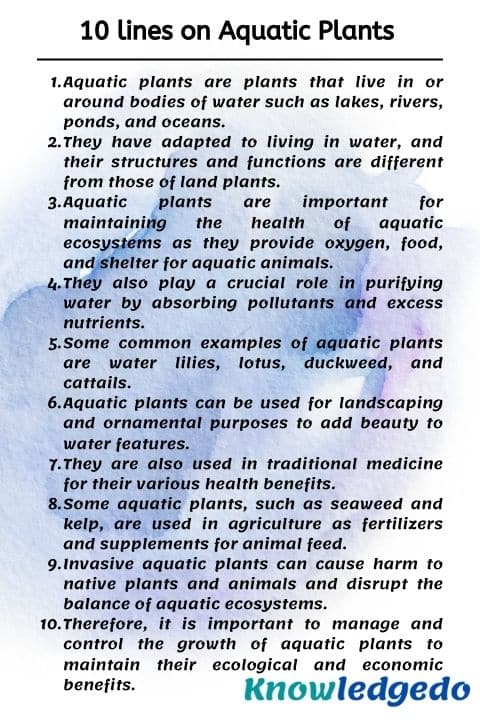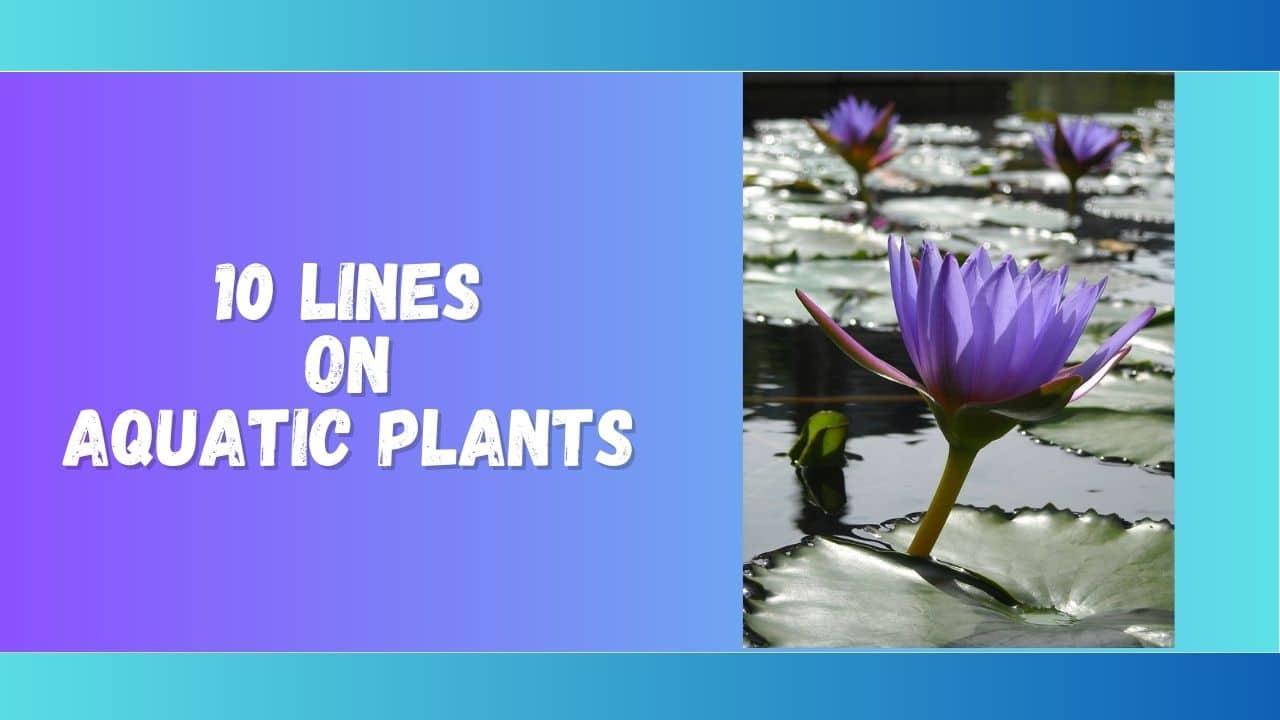Today, we are sharing 10 lines on Aquatic Plants in English. This article can help students who are looking for information about 10 lines on Aquatic Plants. This Lines is very simple and easy to remember. The level of these Lines is moderate so any student can write on this topic.
This article is generally useful for class 1,class 2,class 3,class 4,class 5,class 6,class 7,class 8,class 9,class 10,class 11,class 12
10 lines on Aquatic Plants
1) Aquatic plants are plants that live in or around bodies of water such as lakes, rivers, ponds, and oceans.
2) They have adapted to living in water, and their structures and functions are different from those of land plants.
3) Aquatic plants are important for maintaining the health of aquatic ecosystems as they provide oxygen, food, and shelter for aquatic animals.
4) They also play a crucial role in purifying water by absorbing pollutants and excess nutrients.
5) Some common examples of aquatic plants are water lilies, lotus, duckweed, and cattails.
6) Aquatic plants can be used for landscaping and ornamental purposes to add beauty to water features.
7) They are also used in traditional medicine for their various health benefits.
8) Some aquatic plants, such as seaweed and kelp, are used in agriculture as fertilizers and supplements for animal feed.
9) Invasive aquatic plants can cause harm to native plants and animals and disrupt the balance of aquatic ecosystems.
10) Therefore, it is important to manage and control the growth of aquatic plants to maintain their ecological and economic benefits.

5 lines on Aquatic Plants
1) Aquatic plants are plants that grow in or near water bodies like lakes, rivers, ponds, and oceans.
2) They have adapted to living in water, and their structures and functions differ from those of land plants.
3) Aquatic plants play a vital role in maintaining the health of aquatic ecosystems by providing food, oxygen, and shelter for aquatic animals.
4) They also filter and purify water by absorbing pollutants and excess nutrients.
5) Some common examples of aquatic plants are water lilies, lotus, and duckweed.
FAQ
Answer: Aquatic plants can add a unique and aesthetic appeal to water features and ponds, and can also help to control algae growth and improve water quality.
Answer: Some aquatic plants can become invasive and disrupt the balance of aquatic ecosystems, causing harm to native plants and animals.
Answer: Aquatic plants have adapted to living in water, and have specialized structures and functions that allow them to absorb oxygen and nutrients from water. They also have different methods of reproduction, such as producing seeds or spores that can float or be carried by water currents.
